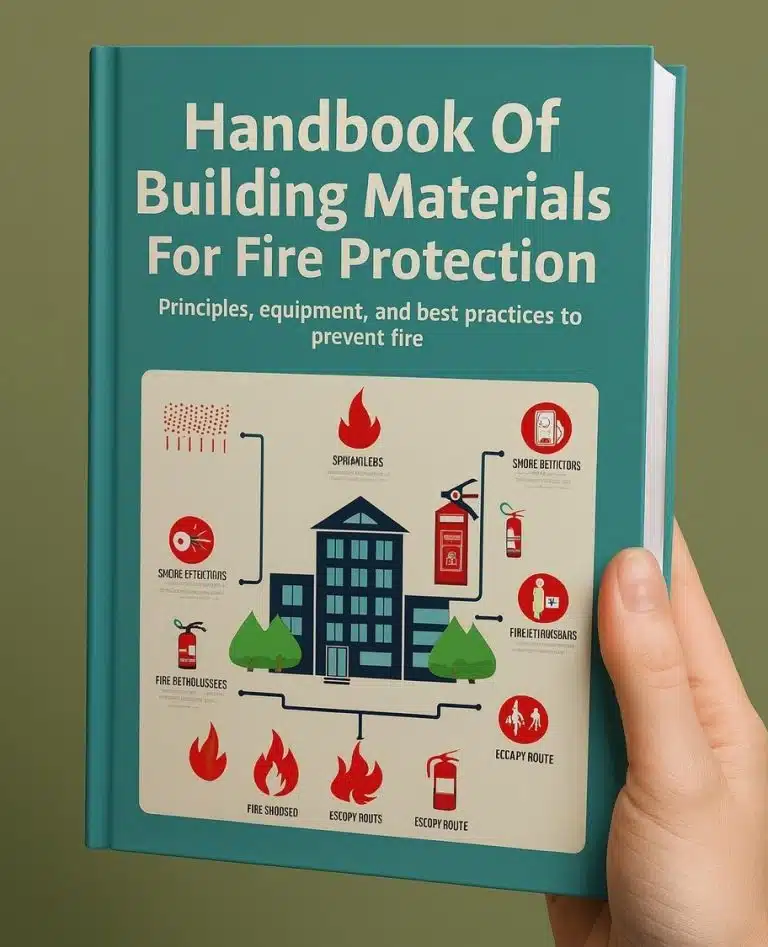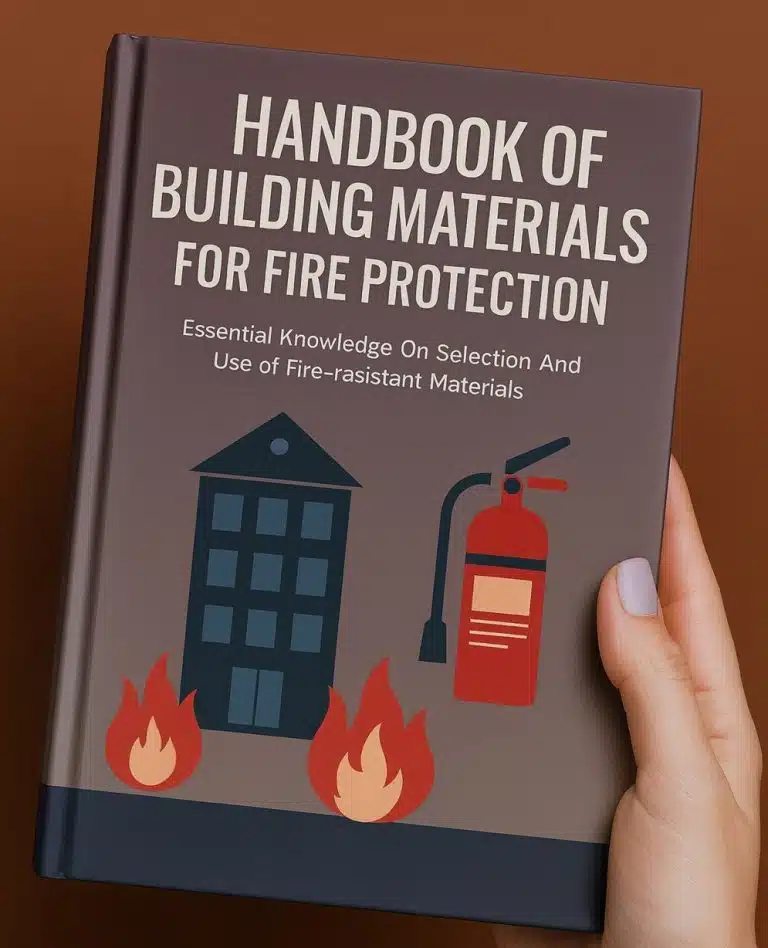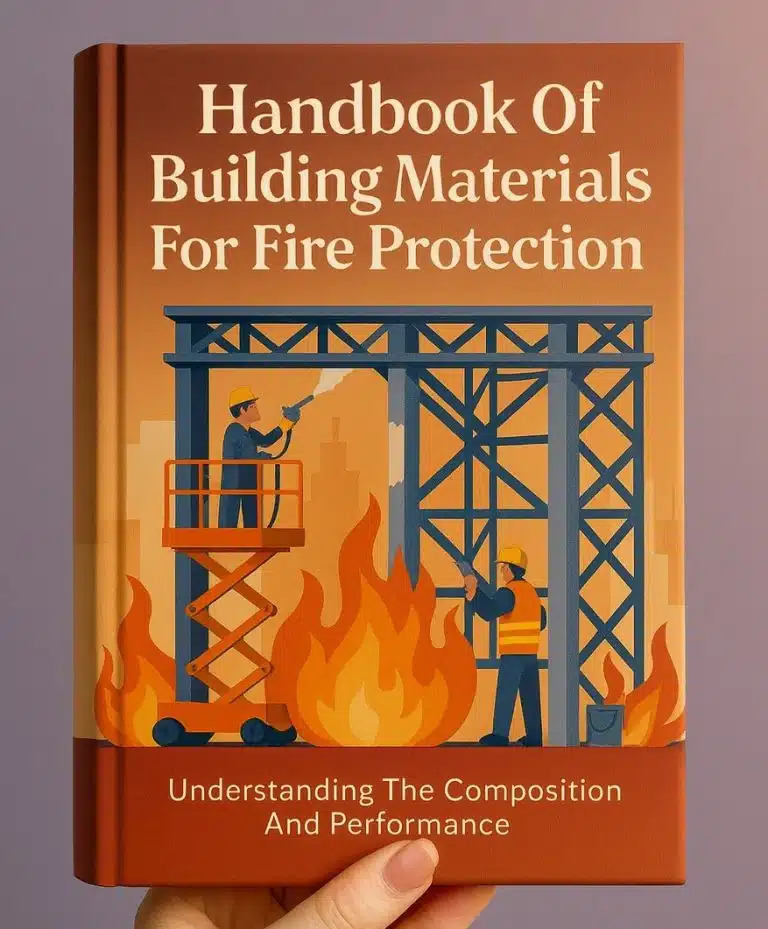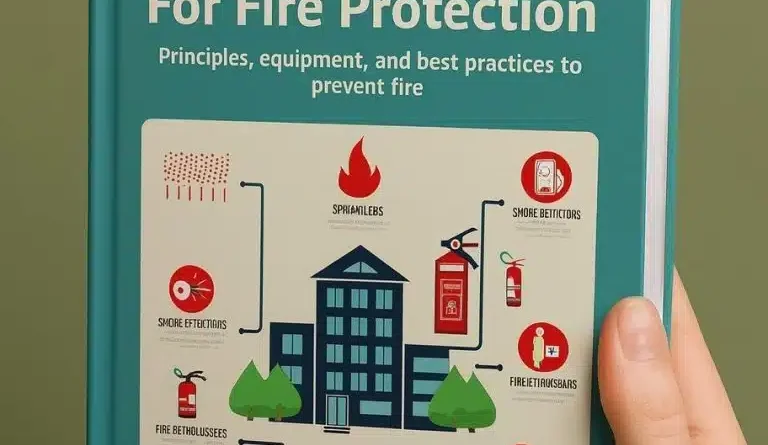Handbook of Building Materials for Fire Protection
Handbook of Building Materials for Fire Protection: The Essential Fire Safety Guide
The Handbook of Building Materials for Fire Protection, edited by Charles A. Harper, is a definitive and comprehensive reference guide dedicated exclusively to the study and selection of materials in the field of fire engineering and fire safety design. This 800-page resource is crucial for architects, designers, structural engineers, and fire protection professionals who need to ensure buildings are constructed to resist and minimize fire damage while complying with international building codes.
The book moves beyond general fire safety to focus specifically on the intrinsic properties and behavior of construction materials during a fire event, addressing two major concerns: how materials contribute to the ignition and propagation of fire, and how their structural integrity degrades under high heat.
What the Book Offers: Core Content and Key Benefits

This handbook provides the essential technical data and conceptual framework needed for proactive, material-based fire safety design.
Core Content Coverage
- Fundamentals of Fire Hazards: Establishes the basics, including characteristics of materials relevant to fire, such as softening points, combustion behaviors, heat release rates, and the fire triangle.
- Material-Specific Fire Behavior: Provides detailed chapters on the burning characteristics, degradation, and fire-resistant treatment of the most common building materials:
- Plastics and Rubbers (Elastomers): Crucial for interiors and insulation.
- Structural Materials (Steel, Concrete): Assessing fire endurance and load-bearing capacity under heat.
- Wood and Wood Products: Understanding charring, ignition, and treated wood performance.
- Fibers and Fabrics: Important for fire load in internal furnishings.
- Standard Test Methods: Explores standardized testing procedures (like those from ASTM) used to evaluate material flammability, heat release, and fire endurance, giving context to official safety ratings.
- Fire Retardancy Technology: Deep dive into the chemistry and application of flame retardants and coatings used to enhance material performance.
- Codes and Specifications: Guides professionals through the complex maze of materials specifications and international code compliance requirements.
How to Benefit from the Book

- Code Compliance & Risk Mitigation: Use the data to select materials that ensure your building designs comply with stringent fire codes globally, significantly reducing liability and risk.
- Proactive Design: Move from reactive fire suppression to proactive fire protection design by choosing inherently safer construction materials.
- Failure Analysis: Understand the mechanism of material degradation (e.g., steel softening, concrete spalling) to anticipate failure and design effective passive fire protection (PFP) systems.
- Material Selection: Rapidly compare the fire-related properties of hundreds of commercially available materials, making informed decisions on plastics, coatings, textiles, and structural elements.
Unique Features & Importance of Ownership
This handbook’s focus on the material level distinguishes it as a highly valuable tool for specialists.
Key Features of the Handbook
| Feature | Description |
| Material-Centric Focus | The first handbook of its kind to concentrate specifically on the fire behavior and protection of construction materials, rather than just fire suppression systems. |
| Comprehensive Scope | Covers all major material classes—structural, polymeric, textile, and wood—in depth. |
| Practical Reference Data | Includes essential specifications, reference tables, and test data for engineering calculations and decision-making. |
| Expert Guidance | Provides a blend of fire science fundamentals and applied engineering practice, authored by experts in materials and fire technology. |
The Importance of Acquiring This Handbook

For engineers and architects, the Handbook of Building Materials for Fire Protection is an indispensable investment in competence and safety. It provides the quantifiable evidence and detailed understanding necessary to design buildings that not only look good but can also save lives and assets when exposed to fire. It is the essential reference for Passive Fire Protection (PFP) strategy.
Download Your FREE Copy from LightYourBrain.com!
Maximize your professional expertise! Get your copy of the Handbook of Building Materials for Fire Protection completely FREE today at LightYourBrain.com.
Suggested Complementary Resources
To complete your fire and materials safety library, we highly recommend these similar resources:
- SFPE Handbook of Fire Protection Engineering: For comprehensive coverage of all fire protection systems and design.
- Fire Dynamics and Flammability of Materials: For a deeper scientific look at combustion and flame spread.
- Building Construction for the Fire Service: To understand construction methods and their impact on fire fighting and safety.



